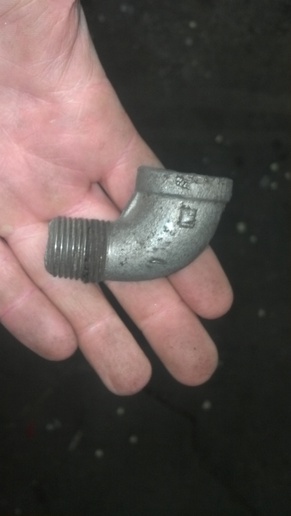in-too-deep
Well-known Member
Always wondered. Can anyone 'splain?



(quoted from post at 08:07:41 05/18/12) In the old days, that was used out in the street, as a tap fitting on top of the water main. Tap the main, thread that into place, snd go to the meter, then to the house.
Anyone know the real reason a fire hydrant is called a "Fire Plug"?????????
(quoted from post at 08:18:30 05/18/12) In the days of old water lines were made of wood.When there was a fire the fire co. would arrive and use a bit&brace to drill a hole into the water line.After the fire they would use a plug to seal the line.These line and plugs are still in use today and I think can still be bought
jimmy
(quoted from post at 10:14:27 05/18/12) James Williams is right, I teach history and tradition in our basic recruit classes, and firefighters today still refer to " catching a plug" when connecting to a hydrant. ALso you have to remember back in the day, apparatus wasnt 2000 gpm, they were hand tubs and didnt pump large volumes. Feels good to add to the forums instead of always asking questions, thanks for reading
ld harv sounds like most logical answer so far.(quoted from post at 08:38:50 05/19/12) My dad worked on installing water mains in the city of most of his life. Water pipes installed under ground have a female end on one end and a male end on the other. When they go around a corner, they need an elbow, and it looks like the fitting in your hand, just bigger. That's why that is called a street fitting.
s long as we are addressing the "why" of things, answer me this: why are buttons on the right of men's shirts & on the left of women's shirts? :roll:(quoted from post at 11:58:41 05/20/12)ld harv sounds like most logical answer so far.(quoted from post at 08:38:50 05/19/12) My dad worked on installing water mains in the city of most of his life. Water pipes installed under ground have a female end on one end and a male end on the other. When they go around a corner, they need an elbow, and it looks like the fitting in your hand, just bigger. That's why that is called a street fitting.
I like this one too: screw a pipe into it, it turns 90 deg, you still got male threads. Straight, get it? Straight & street being similar in sound........to somebody.
or,
It was named before bi-sezual was coined, so it was too early to call it a bi-sezual ell or bi-ell??????????? :wink:
We sell tractor parts! We have the parts you need to repair your tractor - the right parts. Our low prices and years of research make us your best choice when you need parts. Shop Online Today.
Copyright © 1997-2024 Yesterday's Tractor Co.
All Rights Reserved. Reproduction of any part of this website, including design and content, without written permission is strictly prohibited. Trade Marks and Trade Names contained and used in this Website are those of others, and are used in this Website in a descriptive sense to refer to the products of others. Use of this Web site constitutes acceptance of our User Agreement and Privacy Policy TRADEMARK DISCLAIMER: Tradenames and Trademarks referred to within Yesterday's Tractor Co. products and within the Yesterday's Tractor Co. websites are the property of their respective trademark holders. None of these trademark holders are affiliated with Yesterday's Tractor Co., our products, or our website nor are we sponsored by them. John Deere and its logos are the registered trademarks of the John Deere Corporation. Agco, Agco Allis, White, Massey Ferguson and their logos are the registered trademarks of AGCO Corporation. Case, Case-IH, Farmall, International Harvester, New Holland and their logos are registered trademarks of CNH Global N.V.
Yesterday's Tractors - Antique Tractor Headquarters
Website Accessibility Policy
